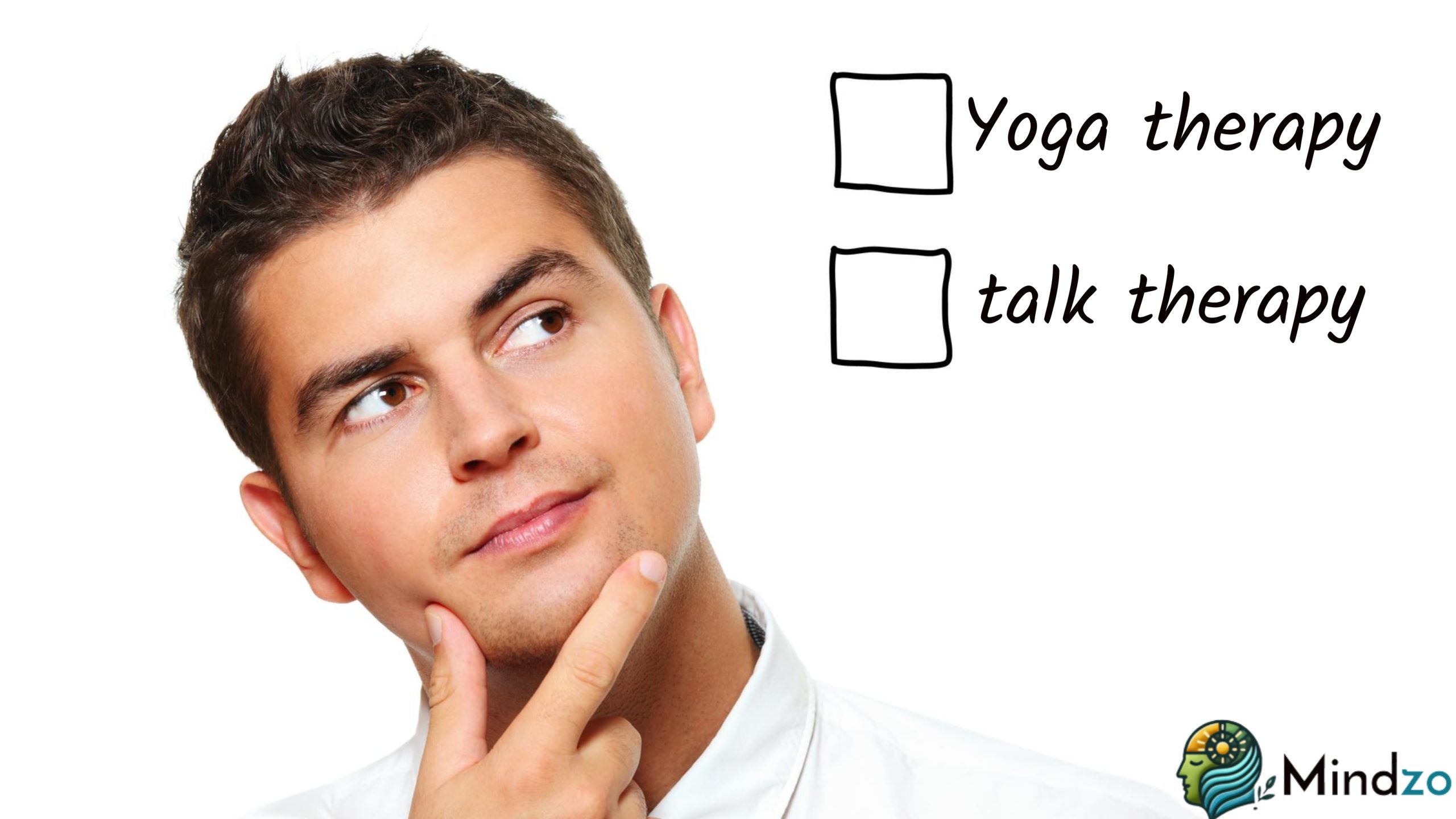Yoga Therapy vs Talk Therapy: Which Path to Mental Wellness?

Mental health treatment has evolved dramatically over the past few decades, with traditional psychotherapy no longer being the only pathway to emotional wellbeing. Yoga therapy has emerged as a scientifically validated alternative that challenges the conventional talk-based approach to mental health care. As millions seek effective treatment for anxiety, depression, and trauma, the question arises: which therapeutic approach offers the most profound and lasting benefits?
The choice between yoga therapy and traditional talk therapy represents more than just a preference for movement versus conversation. Research demonstrates that both approaches can significantly improve mental health outcomes, but they work through fundamentally different mechanisms. Understanding these differences can help individuals make informed decisions about their healing journey and potentially discover the most effective path to mental wellness.
Understanding Yoga Therapy
Yoga therapy differs significantly from a standard yoga class by incorporating specific therapeutic intentions and individualized treatment plans. Unlike general yoga practices focused on physical fitness, yoga therapy uses ancient yogic principles systematically to address specific mental health conditions and personal healing goals.
A certified yoga therapist conducts comprehensive assessments similar to traditional therapists, but uses the framework of the eight limbs of yoga to develop treatment strategies. This includes ethical guidelines (yamas and niyamas), physical postures (asanas), breathing techniques (pranayama), concentration practices (dharana), and meditation (dhyana).
The approach integrates Sanskrit terminology and concepts like chakras and doshas to understand and explain mental health challenges. Rather than viewing symptoms through a purely Western medical lens, yoga therapy considers the interconnection between mind, body, and spirit, addressing imbalances in the energetic system that may contribute to psychological distress.
Evidence-Based Foundations
A comprehensive meta-analysis of yoga therapy studies revealed significant effectiveness as an adjunct treatment for multiple psychiatric disorders, including depression, anxiety, PTSD, and schizophrenia.
Clinical trials specifically comparing yoga therapy to standard treatments found comparable efficacy with fewer side effects. Participants in yoga therapy groups showed greater improvements in overall quality of life and stress management compared to those receiving conventional treatments, while experiencing minimal adverse effects primarily related to temporary muscle soreness.
The Traditional Talk Therapy Approach
Traditional psychotherapy, or talk therapy, encompasses various evidence-based approaches including cognitive-behavioral therapy (CBT), psychodynamic therapy, and dialectical behavior therapy. These modalities primarily use verbal communication, cognitive restructuring, and behavioral interventions to address mental health challenges.
Talk therapy excels in helping individuals understand thought patterns, process traumatic experiences, and develop cognitive coping strategies. Licensed therapists use established diagnostic criteria and treatment protocols, with many approaches having decades of research supporting their effectiveness for specific conditions.
The strength of talk therapy lies in its systematic approach to understanding the psychological roots of mental health issues. Through verbal exploration, individuals can gain insights into behavioral patterns, relationship dynamics, and underlying beliefs that contribute to emotional distress.
Mechanisms of Action: How Each Approach Works
Yoga Therapy’s Physiological Impact
Yoga therapy creates measurable changes in the nervous system, particularly through activation of the parasympathetic nervous system and regulation of the HPA (hypothalamic-pituitary-adrenal) axis. These physiological changes directly counter the stress response patterns commonly seen in anxiety and depression.
Breathing practices (pranayama) represent one of the most powerful therapeutic components of yoga therapy. Research shows that specific breathing techniques can rapidly decrease cortisol levels, increase GABA production, and activate the vagus nerve, creating immediate relaxation responses that support long-term mental health improvements.
The integration of physical postures, breathing, and mindfulness creates a multi-system approach that addresses mental health through somatic pathways. This bottom-up processing can be particularly effective for trauma-related conditions where traditional top-down cognitive approaches may be insufficient.
Talk Therapy’s Cognitive Restructuring
Traditional psychotherapy works primarily through cognitive restructuring and insight development. By identifying and challenging negative thought patterns, individuals learn to reframe experiences and develop more adaptive responses to stressors.
The therapeutic relationship itself serves as a healing factor in talk therapy. The safety and support provided by a skilled therapist can help individuals process difficult emotions and experiences that might be too overwhelming to face alone.
Behavioral interventions in approaches like CBT provide practical tools for managing symptoms and changing problematic patterns. These concrete strategies can be particularly effective for individuals who benefit from structured, goal-oriented approaches to mental health improvement.
Comparative Effectiveness Research
Direct Comparison Studies
The most comprehensive direct comparison between yoga therapy and talk therapy examined their relative effectiveness for treating generalized anxiety disorder. While both approaches significantly outperformed control conditions, CBT demonstrated superior outcomes in reducing anxiety symptoms and achieving clinical improvement rates.
However, yoga therapy participants showed unique benefits not captured in standard anxiety measures, including improved body awareness, spiritual well-being, and stress resilience. These advantages suggest that yoga therapy may provide broader wellness benefits beyond symptom reduction.
Quality of Life Improvements
Research consistently shows that yoga therapy participants report greater improvements in overall quality of life compared to those receiving conventional treatments. A controlled study found significant improvements in depression scores and life quality among yoga practitioners, with effects maintained over time.
The holistic nature of yoga therapy appears to create more comprehensive wellbeing improvements. Participants report enhanced physical health, improved sleep quality, better stress management, and increased spiritual connection alongside mental health improvements.
Integration and Complementary Approaches
The Synergistic Model
Many practitioners and researchers advocate for integrating yoga therapy with traditional talk therapy rather than viewing them as competing approaches. This combined model leverages the cognitive insights of psychotherapy with the somatic healing of yoga practice.
Clinical experience suggests that individuals who combine both modalities often achieve more comprehensive and lasting results. The verbal processing of talk therapy can help integrate the somatic experiences of yoga practice, while yoga techniques provide practical tools for managing symptoms between therapy sessions.
Ethical guidelines for integrating these approaches emphasize the importance of proper training and clear scope of practice boundaries. Therapists incorporating yoga techniques must receive appropriate training to ensure safe and effective implementation.
Timing and Sequencing
Research indicates that the timing of different therapeutic approaches can influence effectiveness. Some individuals benefit from beginning with yoga therapy to develop body awareness and stress management skills before engaging in intensive talk therapy, while others prefer the reverse sequence.
For trauma-related conditions, yoga therapy may serve as an important preparatory phase. The gentle, body-based approach can help stabilize the nervous system and build resources before processing traumatic memories through traditional therapy methods.
Individual Factors in Treatment Selection
Personality and Learning Styles
Research suggests that treatment preference and personality factors significantly influence therapeutic outcomes. Individuals who prefer experiential, body-based approaches may respond more favorably to yoga therapy, while those who enjoy verbal processing and cognitive analysis may benefit more from talk therapy.
Cultural background and spiritual orientation also influence treatment effectiveness. People from cultures that emphasize mind-body integration or those with existing spiritual practices may find yoga therapy more aligned with their worldview and values.
Symptom Presentation and Severity
The nature and severity of mental health symptoms can guide treatment selection. Severe anxiety disorders or major depression may require the structured, intensive approach of evidence-based psychotherapy, while stress-related conditions might respond well to yoga therapy’s holistic approach.
Trauma-related conditions often benefit from body-based approaches like yoga therapy. Traditional talk therapy alone may be insufficient for trauma that is stored in the body’s nervous system and requires somatic processing for complete healing.
Practical Considerations
Accessibility and Cost
Insurance coverage represents a significant practical difference between these approaches. Most traditional psychotherapy is covered under insurance plans, while yoga therapy typically requires out-of-pocket payment, though this is gradually changing as evidence for its effectiveness grows.
The availability of qualified practitioners varies by location. While licensed psychotherapists are widely available, certified yoga therapists may be more difficult to find, particularly in rural or underserved areas.
Time Commitment and Sustainability
Yoga therapy often requires ongoing practice between sessions to maintain benefits. This self-directed component can be empowering for some individuals but challenging for others who prefer the structured support of regular therapy appointments.
The skills learned in yoga therapy can become lifelong tools for mental health maintenance. Unlike some forms of talk therapy that may have natural endpoints, yoga therapy provides a sustainable practice that individuals can continue independently.
Future Directions and Emerging Research
Personalized Treatment Approaches
Emerging research focuses on identifying which individuals are most likely to benefit from each approach. Factors such as genetic markers, personality profiles, and neurological differences may eventually guide personalized treatment recommendations.
Technology integration is expanding access to both modalities through online platforms and mobile applications. Virtual reality yoga therapy and teletherapy options are making these treatments more accessible to diverse populations.
Integrated Training Programs
Professional training programs are beginning to integrate both approaches, preparing therapists to offer more comprehensive treatment options. This integration requires careful attention to scope of practice and ethical considerations but promises more effective, personalized care.
Making the Choice: Practical Guidelines
Assessment Considerations
When choosing between yoga therapy and talk therapy, consider your primary goals, learning style preferences, and the nature of your mental health concerns. Those seeking cognitive insight and verbal processing may prefer traditional therapy, while individuals wanting holistic, body-based healing might gravitate toward yoga therapy.
Practical factors such as cost, insurance coverage, and practitioner availability also influence the decision. Consider these logistics alongside therapeutic preferences to make the most realistic choice for your circumstances.
Starting Your Journey
Many individuals benefit from trying both approaches, either sequentially or simultaneously. The therapeutic journey is rarely linear, and different approaches may be more helpful at different stages of healing and personal growth.
Consultation with qualified practitioners from both disciplines can provide valuable insights into which approach might be most beneficial for your specific situation. Most reputable practitioners will provide honest assessments of whether their approach aligns with your needs and goals.
On a final note
The choice between yoga therapy and talk therapy need not be an either/or decision. Both approaches offer scientifically validated pathways to mental wellness, each with unique strengths and applications. Traditional talk therapy excels in cognitive restructuring and insight development, while yoga therapy provides holistic, somatic healing that addresses mind-body integration.
Research supports both modalities as effective treatments for various mental health conditions, with some studies showing comparable outcomes and others demonstrating the superiority of specific approaches for certain conditions. The key lies in understanding your individual needs, preferences, and circumstances to make an informed choice.
The future of mental health care likely involves greater integration of these approaches, recognizing that comprehensive healing often requires multiple pathways. Whether you choose yoga therapy, talk therapy, or a combination of both, the most important step is beginning the journey toward greater mental wellness and emotional freedom.
Resources :
-
 Beyond Words: The Emotional Medicine of a Simple HugOctober 27, 2025
Beyond Words: The Emotional Medicine of a Simple HugOctober 27, 2025 -
 Music’s Unique Therapeutic BenefitsOctober 23, 2025
Music’s Unique Therapeutic BenefitsOctober 23, 2025

Leave a Reply